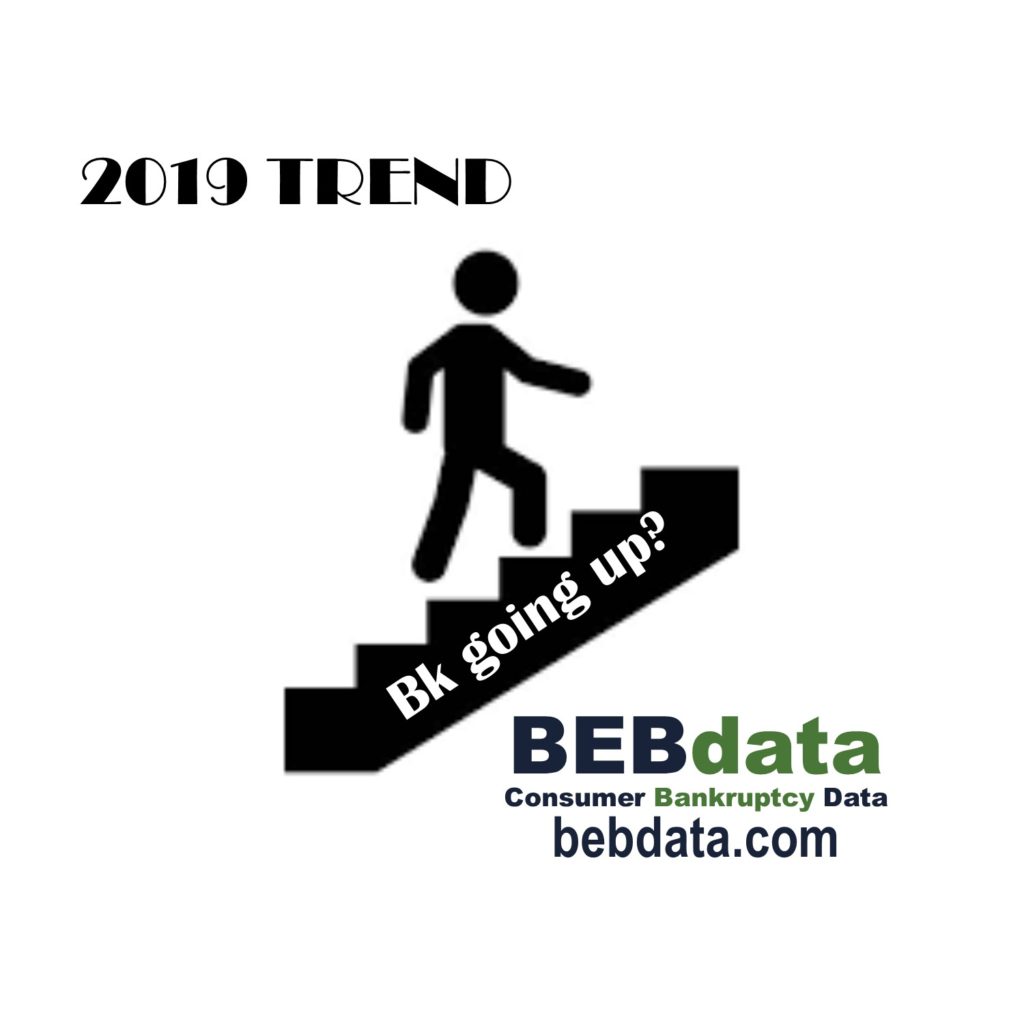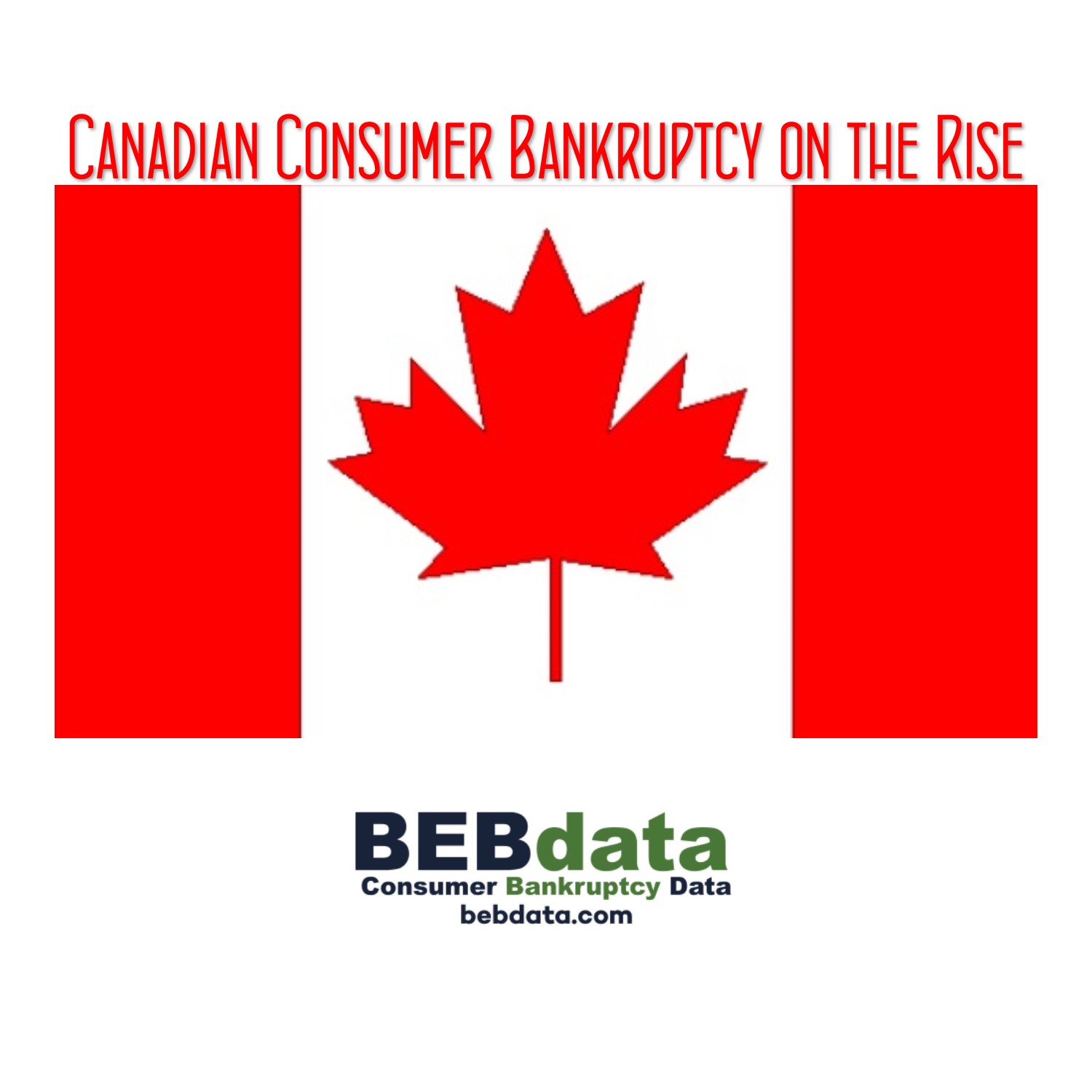 The social safety net for older Americans has been shrinking for the past 20 years or so. Reduced income, and increased healthcare costs, are now financial risks associated with aging. A new trend is emerging, older Americans are increasingly likely to file consumer bankruptcy. Using data from the Consumer Bankruptcy Project, the SSRN (Social Science Research Network) reported finding more than a two-fold increase in the rate at which Americans aged 65 and over file for bankruptcy. Also reported, an almost five-fold increase in the percentage of older persons in the U.S. bankruptcy system. The magnitude of growth in older Americans in bankruptcy is so large that the broader trend of an aging U.S. population can explain only a small portion of the effect. The SSRN data indicates that older Americans report they are struggling with increased financial risks, namely inadequate income and unmanageable costs of healthcare, as they try to deal with reductions to their social safety net. As a result of these increased financial burdens, the median senior bankruptcy filer enters bankruptcy with negative wealth of $17,390 as compared to more than $250,000 for their non-bankrupt peers. For an increasing number of older Americans, their golden years are fraught with economic risks, the result of which is often bankruptcy.
The social safety net for older Americans has been shrinking for the past 20 years or so. Reduced income, and increased healthcare costs, are now financial risks associated with aging. A new trend is emerging, older Americans are increasingly likely to file consumer bankruptcy. Using data from the Consumer Bankruptcy Project, the SSRN (Social Science Research Network) reported finding more than a two-fold increase in the rate at which Americans aged 65 and over file for bankruptcy. Also reported, an almost five-fold increase in the percentage of older persons in the U.S. bankruptcy system. The magnitude of growth in older Americans in bankruptcy is so large that the broader trend of an aging U.S. population can explain only a small portion of the effect. The SSRN data indicates that older Americans report they are struggling with increased financial risks, namely inadequate income and unmanageable costs of healthcare, as they try to deal with reductions to their social safety net. As a result of these increased financial burdens, the median senior bankruptcy filer enters bankruptcy with negative wealth of $17,390 as compared to more than $250,000 for their non-bankrupt peers. For an increasing number of older Americans, their golden years are fraught with economic risks, the result of which is often bankruptcy.
Tag Archives: BEBdata
BK Climbing in 2019
 Is the trend of declining bankruptcy filings coming to an end? There are some key indicators that suggest it.
Is the trend of declining bankruptcy filings coming to an end? There are some key indicators that suggest it.
A 2019 report from the American Bankruptcy Institute (ABI) indicates that consumer bankruptcy filings are on track to increase notably for the first time in years. The ABI shows that total U.S. bankruptcy filings increased 3% in July from the previous July; consumer bankruptcy filings increased at the same 3 percent rate year-to-year, with 61,025 consumer filings in July 2019, up from 59,110 in July 2018. Consumer bankruptcies also rose about 5 percent month to month from June to July 2019 (from 58,003 to 61,025).
The New York Post noted that if the trend continues, the overall total of [personal and business] bankruptcies is on pace to hit 796,000 which far exceeds last year’s totals.
Data from the ABI suggests that household debt is roughly $14 trillion, which is $1 trillion more than the 2008 Great Recession peak. Credit card debt is $1 trillion and also exceeds the 2008 peak, which could make households more likely to turn to bankruptcy as a means of relief moving forward.
Auto Lending
 Six Major Trends in Lending for Financial Marketers this Year
Six Major Trends in Lending for Financial Marketers this Year
The forecast for most forms of consumer credit is good. Lending volume, growth in balances, and overall performance look upbeat for the year ahead. Banks and credit unions will try new marketing strategies, explore new products, and experiment with new technologies. Over the next six-weeks, we’ll review major trends in consumer lending that financial marketers should watch closely.
#3 Auto Lending: More Informed, Less Understanding
A mix of economic trends will impact auto lending. Rising tariffs and a preference for SUVs and hybrids will bump up pricing and impact affordability. Low unemployment and rising Gross Domestic Product will support continued growth and positive credit performance.
Overall, the auto finance market continues to show signs of health and growth in many ways.
Auto shopping and auto lending processes have grown more transparent as more and more resources can be accessed on the web. But some of the information consumers think they are armed with is misleading or plain wrong. For example, the credit score methodologies used by auto lenders and auto dealers differs from many of the scores that consumers obtain from websites. This confuses the process. Clearing up that confusion is another job for bank and credit union marketers.
Another new factor is alternative credit data — tapping nontraditional sources of payment information to help judge creditworthiness. Use of utility bill payment patterns and the like is becoming more common among lenders, especially non-bank auto finance companies.
AI Powered Lending
Six Major Trends in Lending for Financial Marketers this Year
The forecast for most forms of consumer credit is good. Lending volume, growth in balances, and overall performance look upbeat for the year ahead. Banks and credit unions will try new marketing strategies, explore new products, and experiment with new technologies. Over the next six-weeks, we’ll review major trends in consumer lending that financial marketers should watch closely.
#1 AI Powered Consumer Lending
Fintech lenders are making inroads into banking markets by harnessing advanced analytics and non-traditional data as they automate and fine-tune underwriting processes. There’s no reason traditional lenders can’t follow suit, using artificial intelligence and data analytics to find prospects, evaluate creditworthiness, and monitor and manage the loan portfolio.
While trying not to interfere with marketplace forces bringing evolution of financial services, regulators have concerns as AI assumes a larger role. Regulators will be expecting to see the appropriate controls in place to be sure that AI doesn’t produce unintended consequences for lenders or borrowers.
AI has the potential to expand the availability of consumer credit by evaluating factors that go beyond traditional credit metrics. AI also has the potential to allow creditors to more accurately model and price risk, and to bring greater speed to decisions.
AI approaches are not free of bias simply because they are automated and rely less on direct human intervention. Algorithms and models reflect the goals and perspectives of those who develop them as well as the data that trains them and, as a result, AI tools can adopt the biases of the society in which they were created.
Financial marketers can help avoid such problems through the insights they have on their institutions’ markets and outreach.
NADA2020
Monetizing Car Data
A massive amount of data is being generated as privately owned vehicles continue to use sensors and become increasingly connected to each other and to an external infrastructure. Yet while gathering such data is now routine, actually identifying insights that can be monetized is still in its infancy. McKinsey Automotive & Assembly published an interesting report called Monetizing car data. They analyze consumer perspectives on the prospect of accessing car-generated data, and identify the value and requirements of possible car data-enabled use cases. They predict that the global revenue pool from car data monetization could be as high as $750 billion by 2030. Check it out here.
Zero Party Data
Canadian Consumer BK on the Rise
The number of bankruptcies in Canada is on the rise.
According to the Ottawa-based Office of the Superintendent of Bankruptcy (OSB), the number of consumers seeking debt relief jumped 5.1% to 11,320 in November from a year earlier. October and November combined saw 22,961 consumer insolvency filings, the most for those two months since 2011.
The increase in bankruptcy filings is being blamed on higher interest rates that are leading to rising borrowing costs for Canadian households. The Bank of Canada has lifted its key lending rate five times since mid-2017. Policy makers, who meet this week to determine their next move on rates, are closely monitoring the impact of higher borrowing costs on the economy and Canadian consumers.
On a year-over-year basis, bankruptcy filings during October and November were up in every province except Prince Edward Island, which was unchanged, according to the OSB. Alberta was the hardest hit, with the number of insolvencies rising 16% from autumn 2017. About 66% of Ontario bankruptcy filings in November were made by consumers, which is the highest share on record.
CFPB Rolls Back Pay Day Loan Protection
The Consumer Financial Protection Bureau proposed rolling back the key provision of a lending rule designed to protect people taking short-term, high-interest loans, also known as payday loans.
Under the proposal (PDF), which amends the 2017 Payday Lending Rule, lenders would not have to confirm that their borrowers have the means to repay some types of loans. Eliminating the “ability to pay” requirement would affect loans with a term of 45 days or less. It also would target single-payment vehicle title loans, in which borrowers put up their cars or trucks for collateral, and longer-term, balloon-payment loans.
Payday loans typically have annual interest rates between 300 and 400 percent. Payday lenders who offer these loans often operate in low-income communities.
As currently written, the Payday Lending Rule requires lenders to view borrowers’ pay stubs, check with employers, or otherwise confirm borrowers’ ability to pay back their loans.
Proponents of the change say the looser rule will ensure that those borrowers have more credit options. Opponents say the change puts borrowers at greater financial risk than they faced before borrowing.
The new rule’s implementation will also be postponed (PDF) to November 2020, from its earlier start date of August 2019.
Run For Rama
We will be running on May 4, 2019 to benefit the Blanton-Davis Ovarian Cancer Research Program at MD Anderson to honor the memory of our Rama Moore. Won’t you consider making a donation today? Go to runforrama.com.







